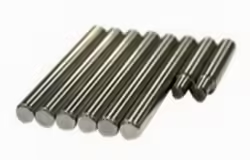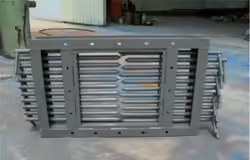
Q235 Mechanical Properties: 8 Smart Tips for Better Use
Table of Contents
Introduction
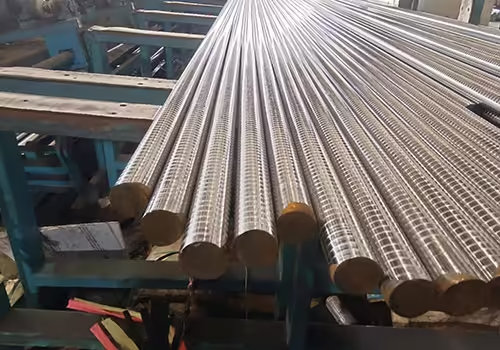
In the realm of structural steel and fabrication, few materials are as widely recognized and utilized as Q235. As a type of carbon structural steel, Q235 is known for its excellent weldability, moderate strength, and cost-efficiency. Whether you are designing a bridge, constructing industrial equipment, or developing steel components for machinery, understanding q235 mechanical properties is essential.
Q235 mechanical properties provide insights into its performance under different stress conditions, including its tensile strength, yield strength, hardness, and elongation. These factors not only determine its load-bearing capabilities but also influence how it behaves during machining, forming, and welding processes.
In this comprehensive guide, we explore eight expert tips for properly evaluating q235 mechanical properties, so you can make informed decisions in material selection and application design.
Tip 1: Understand the Chemical Composition Behind Q235
Before diving into the mechanical performance of Q235, it’s important to first understand its chemical foundation. Q235 is categorized as a carbon structural steel, specifically a low-carbon steel, which significantly influences its behavior in practical applications. The carbon content of Q235 typically ranges between 0.14% and 0.22%, which is relatively low compared to medium or high-carbon steels. This limited carbon percentage plays a pivotal role in making Q235 highly ductile and malleable—key characteristics of Q235 mechanical properties that engineers and manufacturers rely on.
Beyond carbon, Q235 contains small but impactful amounts of manganese (up to 1.4%), which helps improve the material’s strength and toughness. Silicon (up to 0.3%) may be added to enhance elasticity and improve casting properties. Meanwhile, sulfur and phosphorus, although kept below strict maximum limits (usually 0.045% each), can influence the steel’s brittleness and weldability. Their presence is carefully controlled to prevent deterioration of mechanical performance, especially in applications requiring structural reliability.
Understanding this chemical profile is not merely a theoretical exercise—it allows engineers and designers to predict how Q235 steel will behave during welding, forming, and exposure to environmental stress. For instance, the low carbon content means that Q235 can be welded without the risk of excessive hardness in the heat-affected zone, reducing the chances of cracking post-welding.
Additionally, knowledge of the chemical makeup supports more advanced material selection. For example, if greater corrosion resistance or strength is required, engineers may consider alloying Q235 with elements like chromium or nickel or opt for different steel grades altogether. In essence, understanding the chemical composition sets the stage for a more informed and strategic use of Q235 mechanical properties in any industrial project.
Tip 2: Examine Tensile and Yield Strength of Q235
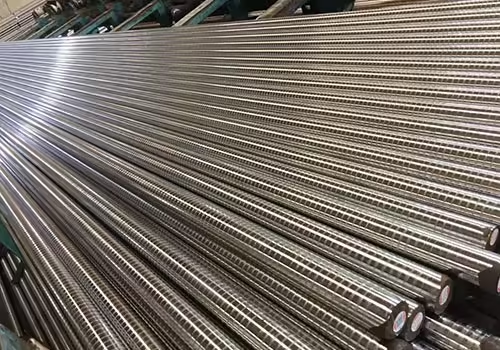
Two of the most important q235 mechanical properties are its tensile strength and yield strength. Tensile strength refers to the maximum amount of stress a material can withstand while being stretched or pulled before breaking. Yield strength, on the other hand, is the stress level at which the material begins to deform permanently.
For Q235, the typical values are:
- Yield Strength: The yield strength of Q235 is 235 MPa, which is where it derives its name (Q stands for “Qu,” meaning yield, and 235 denotes the yield value in megapascals). This value signifies the stress level at which Q235 begins to undergo permanent deformation. Once this limit is exceeded, the steel will not return to its original shape when the load is removed.
- Tensile Strength: The tensile strength of Q235 typically falls between 370 MPa and 500 MPa. This is the maximum amount of stress that the steel can endure while being stretched or pulled before ultimately breaking.
These figures make Q235 suitable for many low-load-bearing applications, especially where flexibility and easy forming are more important than high tensile performance.
Tip 3: Analyze the Hardness and Ductility Factors
Hardness is another critical measure within q235 mechanical properties. It reflects the material’s resistance to deformation, wear, and indentation. Q235 is considered a low hardness steel, which contributes to its ease of cutting, drilling, and machining—characteristics that enhance its usability in many industrial scenarios.
The ductility of Q235 also plays a significant role in its mechanical performance. This attribute allows Q235 to be shaped or bent without cracking, especially during cold-forming processes. These qualities reinforce the value of q235 mechanical properties in fabrication and construction.
However, the lower hardness also means that Q235 is not suitable for high-wear environments without protective coatings or surface enhancements. Understanding this balance is crucial when specifying q235 mechanical properties for long-term durability.
Tip 4: Evaluate Welding and Forming Capabilities
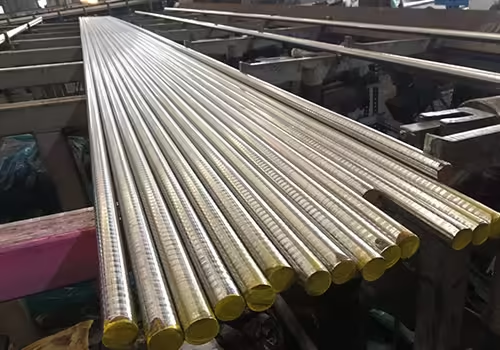
One of the reasons Q235 is so popular in fabrication is due to its excellent weldability—an essential component of q235 mechanical properties. The low carbon content allows Q235 to bond effectively during welding without the risk of cracking or embrittlement. This makes it an ideal choice for structural applications where parts must be joined reliably and securely.
Forming processes, such as rolling, stamping, and bending, are also easily executed with Q235. Its high elongation rate—typically 20% or higher—enhances its suitability for applications requiring shaping or modification post-production. These traits reflect the flexible nature of q235 mechanical properties in design and engineering work.
By recognizing its forming and joining strengths, engineers can better optimize q235 mechanical properties for diverse industrial uses.
Tip 5: Compare Q235 to Other Structural Steels
To properly evaluate q235 mechanical properties, it helps to see how it stacks up against similar materials. Below is a comparative table that highlights some of the key mechanical characteristics:
| Property | Q235 | Q345 | A36 (US Standard) | S235 (EU Standard) |
|---|---|---|---|---|
| Yield Strength (MPa) | 235 | 345 | 250 | 235 |
| Tensile Strength (MPa) | 370-500 | 470-630 | 400-550 | 360-510 |
| Elongation (%) | ≥20 | ≥18 | ≥20 | ≥19 |
| Weldability | Excellent | Excellent | Good | Good |
| Hardness (HB) | ≤ 160 | ≤ 200 | ≤ 170 | ≤ 170 |
This comparison illustrates that while Q235 may not be the strongest steel available, it remains one of the most flexible and cost-effective options for general use.
Tip 6: Consider Heat Treatment and Surface Finishing
Another key factor in evaluating q235 mechanical properties is understanding how treatments can improve performance. While Q235 is not commonly heat-treated for hardening, various surface finishing methods such as galvanization, powder coating, or annealing can significantly enhance resistance to corrosion and wear.
For applications exposed to challenging environments—like humidity, saline air, or abrasive contact—these treatments help extend service life and maintain structural reliability. The impact of these enhancements should be included in a complete analysis of q235 mechanical properties.
Engineers must consider the trade-offs in cost and performance to determine whether surface treatments are justified. Factoring these modifications into design planning allows a more accurate understanding of how q235 mechanical properties will behave under operational stress.
Tip 7: Evaluate Performance in Real-World Conditions
Lab-based measurements provide valuable insights, but real-world performance is what truly defines the utility of q235 mechanical properties. Variables like prolonged loading, cyclic fatigue, and exposure to elements such as moisture, chemicals, and UV light can affect material performance over time.
When used in construction, bridges, or transport applications, Q235’s mechanical response to these conditions—including its resilience to thermal fluctuation and mechanical impact—must be observed. Engineers should complement theoretical evaluations with case studies, prototype testing, and field data to ensure a well-rounded understanding of q235 mechanical properties.
Only through comprehensive real-world evaluation can designers confidently rely on q235 mechanical properties for mission-critical applications.
Tip 8: Align Material Choice with Regulatory Standards
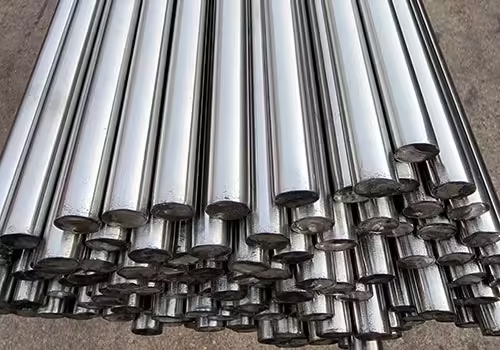
Aligning the selection and application of Q235 with relevant industry and safety standards is a non-negotiable part of assessing q235 mechanical properties. In China, Q235 follows GB700 standards, which define its composition and mechanical performance.
On global projects, equivalent materials such as ASTM A36 or EN S235 may be used interchangeably—but this must be verified through material data sheets and mill certificates. These documents confirm compliance and offer detailed information about q235 mechanical properties, ensuring legal and engineering requirements are met.
Making sure that the material is certified and that its documented q235 mechanical properties match application needs avoids costly setbacks and maintains engineering integrity.
Conclusion
Evaluating q235 mechanical properties is not just about knowing numbers—it’s about applying those metrics to make practical, informed decisions. From chemical composition and tensile strength to weldability and real-world durability, each factor contributes to how well Q235 performs in your application.
Understanding these elements allows engineers, manufacturers, and procurement teams to optimize design choices and ensure project success. If you’re looking to strike the right balance between cost, performance, and workability, Q235 remains one of the most reliable materials in structural engineering.
FAQ
What does the “Q” in Q235 stand for?
“Q” represents yield strength in Chinese steel standards. Q235 has a yield strength of 235 MPa, which is one of the defining q235 mechanical properties. This designation helps differentiate it from other structural steels and immediately conveys its mechanical classification.
Can Q235 be heat treated?
Not typically for hardening, but surface treatments like galvanization, powder coating, or annealing can improve q235 mechanical properties such as corrosion resistance, wear performance, and surface durability. These enhancements can significantly extend the material’s service life, especially in aggressive environments.
Is Q235 equivalent to A36 steel?
Yes, in many aspects. Both are carbon structural steels with similar q235 mechanical properties in terms of tensile and yield strength, weldability, and applications. However, local standards and specifications should always be consulted to confirm full equivalence.
What applications are most suitable for Q235?
Q235 is widely used in construction frameworks, bridge supports, machinery bases, and general engineering components. Its q235 mechanical properties—particularly its balance of strength, ductility, and affordability—make it ideal for applications that demand versatility and cost-effectiveness.
Does Q235 rust easily?
Being a low-carbon steel, Q235 is prone to oxidation when exposed to moisture or corrosive environments. However, proper surface protection such as painting, galvanizing, or powder coating can significantly enhance q235 mechanical properties related to corrosion resistance and longevity. Proactive surface treatment is strongly recommended for outdoor or high-humidity installations.

